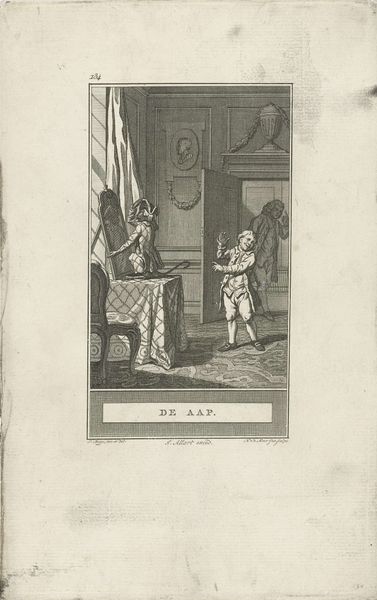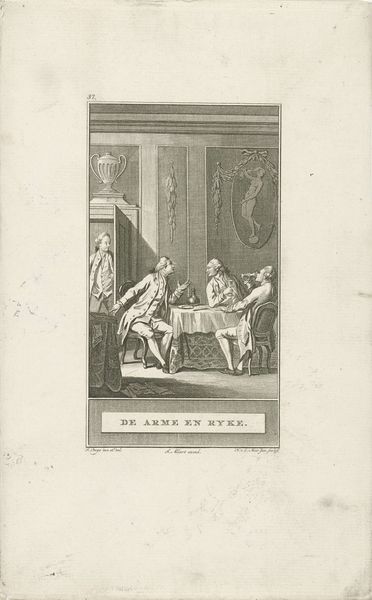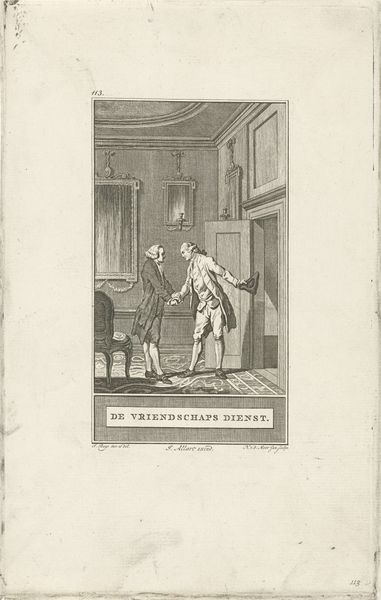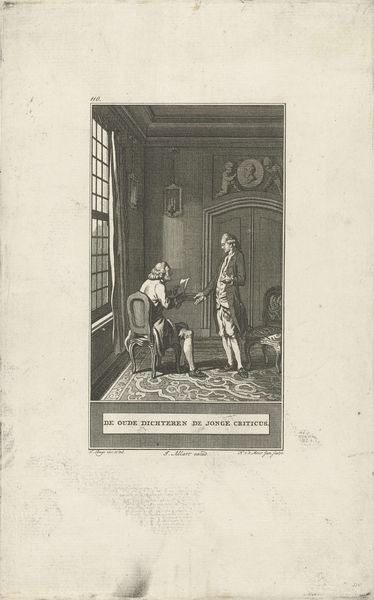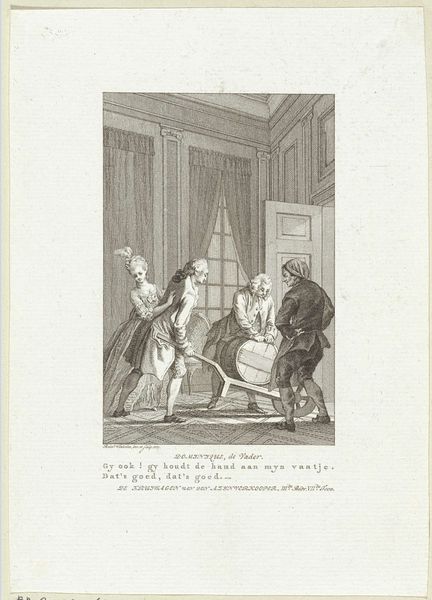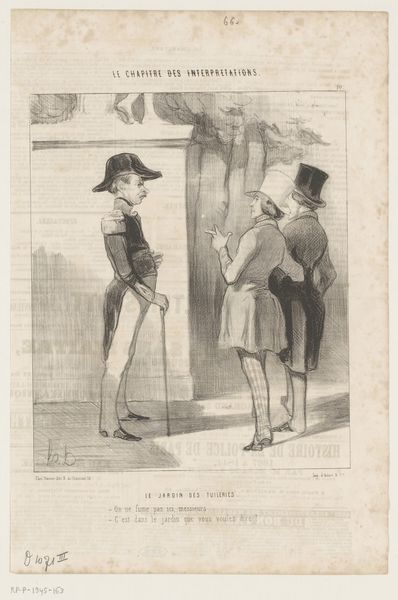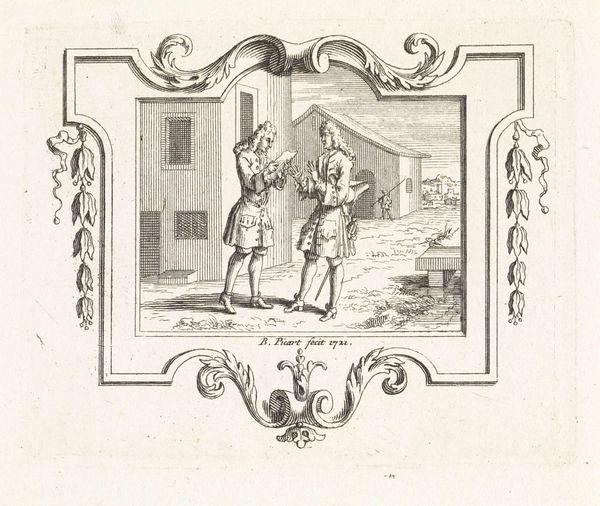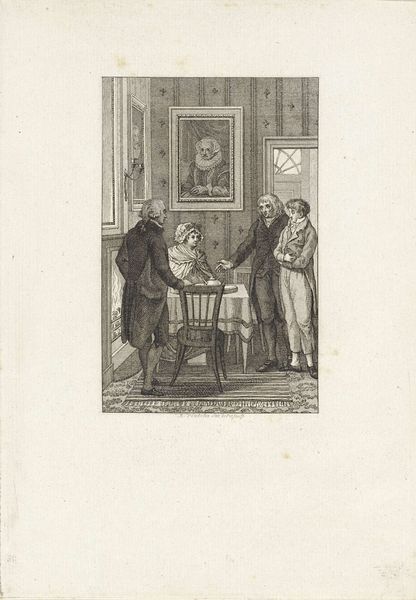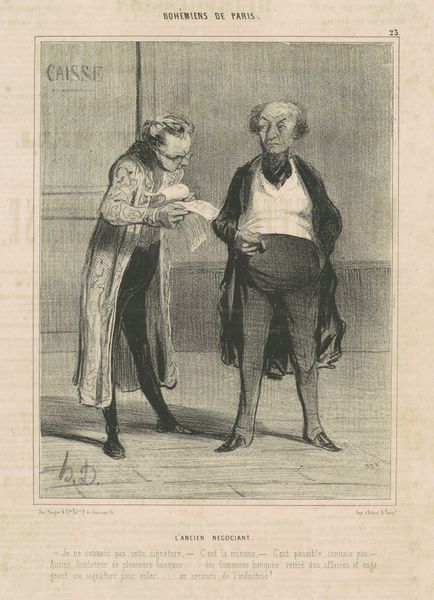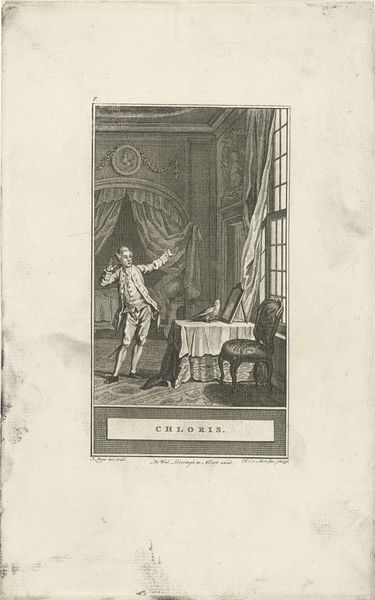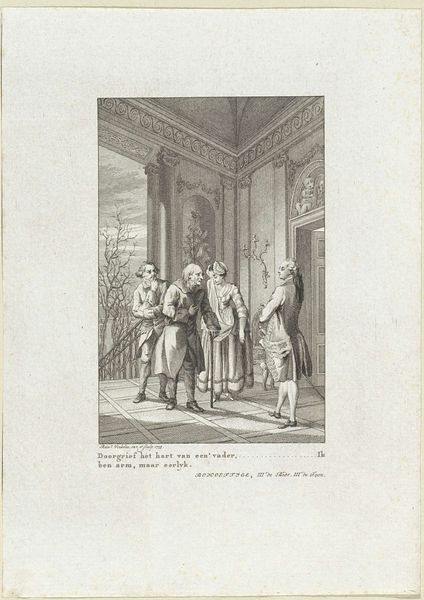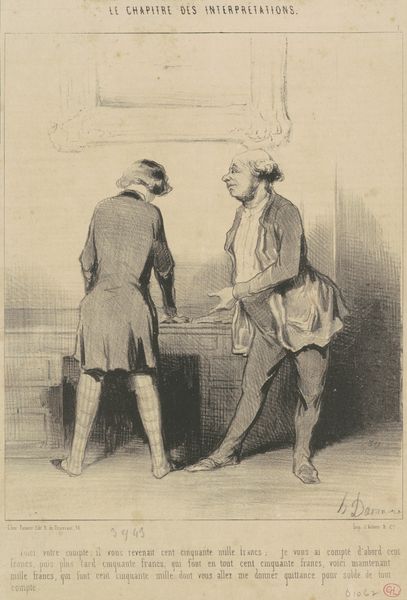
print, paper, engraving
#
portrait
#
neoclacissism
#
narrative-art
# print
#
old engraving style
#
paper
#
genre-painting
#
engraving
Dimensions: height 248 mm, width 155 mm
Copyright: Rijks Museum: Open Domain
Curator: The work before us, titled "Oude Raadgever," or "Old Counselor," dates from somewhere between 1778 and 1785. Created by Noach van der Meer II, it's an engraving on paper that you can find right here in the Rijksmuseum. Editor: My immediate impression is of quiet domestic drama. The composition, rendered with delicate lines, conveys a distinct sense of restrained tension between the two figures. The contrasting light and shadow across the tiled floor adds depth, drawing you into the scene. Curator: Indeed. It offers insight into social dynamics of the time. We see a younger man in fashionable dress seemingly being confronted by an older, perhaps wiser figure. The ‘good advice’ implied in the title suggests an intergenerational dialogue, laden with potential conflicts of social expectations. Editor: I'm struck by how the artist uses the architectural elements—the doorway, the patterned floor—to frame the figures. This almost stage-like space amplifies the narrative. Look at the detail of the hanging clock – it seems like time itself is bearing down upon their exchange. Curator: And note the neo-classical influence; the clean lines and the staged composition are drawing heavily on that tradition, it lends the genre scene a certain gravitas, elevating a commonplace interaction to something more universally significant. There’s a didactic purpose. Editor: The formal restraint of the piece underscores its understated mood. The color, or lack thereof in the print medium, seems to amplify this muted, introspective quality. It emphasizes the careful linework. Curator: Consider this too. The dissemination of such images through prints meant these social commentaries were reaching a broad audience. They help reflect—and probably shape—values. They certainly prompt discussions on status, morality and power within Dutch society during the late 18th Century. Editor: The artwork feels complete even in its simplicity, due to the careful formal rendering. From the tiled floor receding back, to the detail on the men's garments, or to the clock in the back—the precision is the emotional language of the work. Curator: I appreciate seeing how a snapshot of history and value is also something beautiful as well. Editor: Absolutely, and it’s how an artist makes such details sing and suggest bigger ideas—timeless and true.
Comments
No comments
Be the first to comment and join the conversation on the ultimate creative platform.
